How to renovate a garden without losing its magic
It’s exciting to renovate a garden.
But don’t just call in the diggers and try to start again from scratch. That’s one of the biggest mistakes most people make when they start to re-do a garden.
You’re likely to miss out if you clear it completely.
Posy Gentles was asked to restore a garden that had been created in the 1930s.
Very little had been done to it since the late 1980s. It had an Arts & Craft structure, and planting from the 1960s-80s, both of which were overgrown by weeds and seedlings.
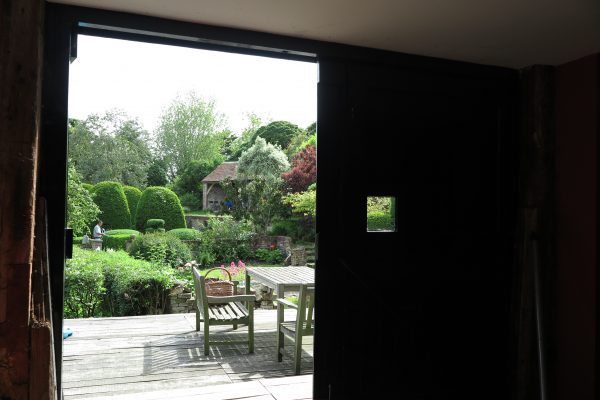
The garden is framed through the barn doors. I love the colour of the woodwork – it looks black but is called Amsterdam Green from Papers & Paints.
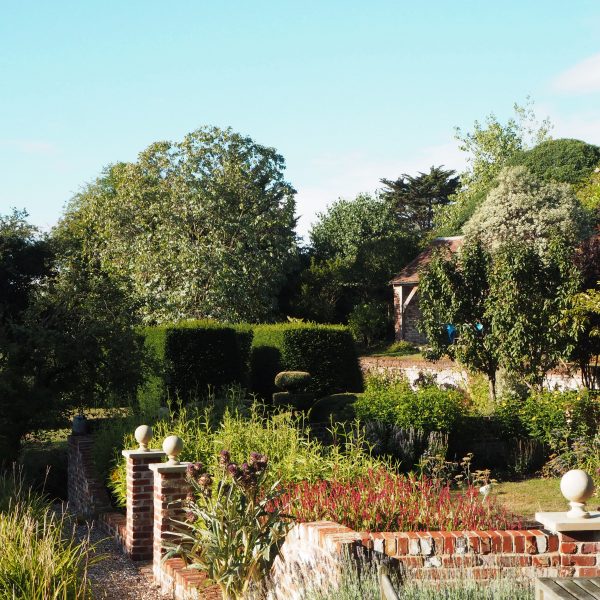
Two years later – the hard landscaping and brickwork has been elegantly restored, and the yews clipped back into shape.
There is stunning mature topiary in the garden. With hybrid tea roses and other shrubs, it’s typical of mid twentieth century gardening.
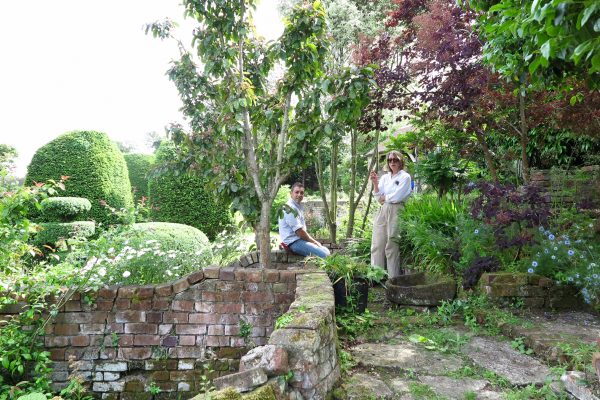
Posy Gentles and her assistant, Salvatore, in the garden. The walls are crumbling because they were over-run with weeds.
But the garden got overgrown
Some plants disappeared completely beneath brambles, nettles, self-seeded sycamores and sticky grass. Others grew tall and leggy in search of the light.
But this wildness has a magic about it that a brand new garden can never hope to achieve. There is weathered brick and stone, while moss and gnarled trees offer hiding places for wildlife.
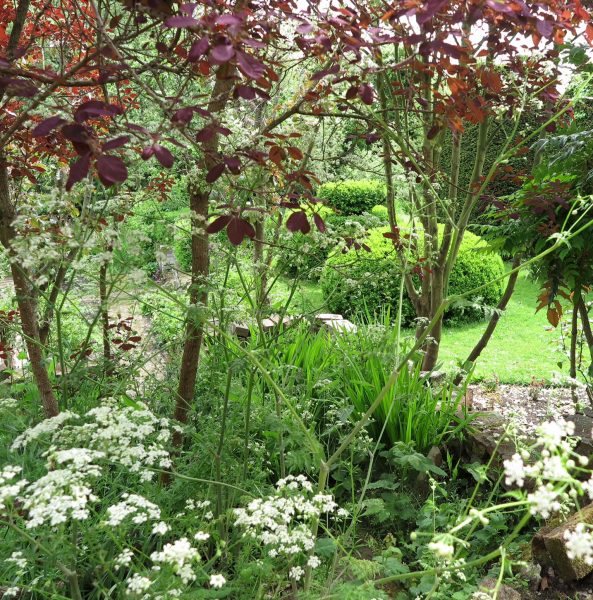
This cotinus had grown tall and leggy over a mound of brambles. Posy and Salvatore cleared them away to reveal a charming, see-through multi-stemmed effect – a contemporary treatment of a traditional shrub.
Posy and her assistant Salvatore, have coaxed it back to life by weeding, clearing and pruning. They’ve replanted some beds completely. But in others the glorious reds, oranges, yellows and pinks of the roses now bloom again.
Plants that can survive decades of neglect
It’s remarkable how good some roses are at surviving decades of neglect. I’ve also written a post on how a community garden in West London has restored an award-winning rose garden that disappeared completely under brambles.
Twentieth century hybrid tea roses fell out of popularity because of their twiggy, awkward structure and the fact that their foliage often got diseased. But if you find one in your garden, give it a chance.
Most rose leaves do get black spot by the end of the summer. But it doesn’t seem to affect their flowering. And if you have lots of other plants in the border, you’ll hardly notice the damaged leaves. Personally, I think black spot is better left alone. You’ll never win the battle.
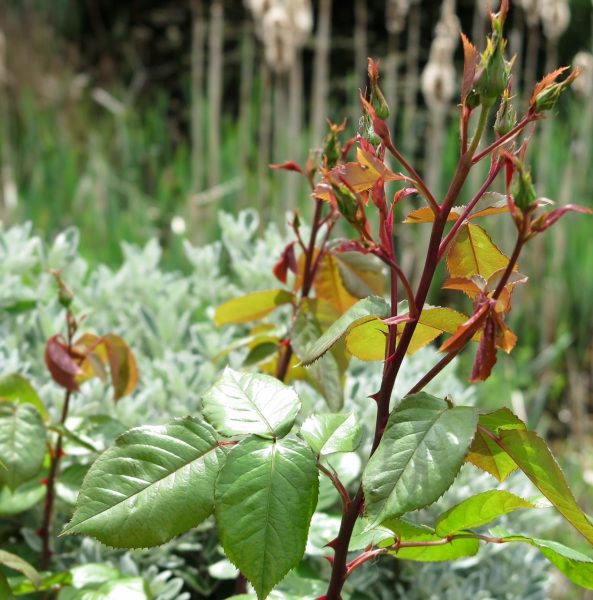
Silvery grey Brachyglottis (Senecio) had completely covered this rose. Posy saw a tip poking out and cut the brachyglottis back.
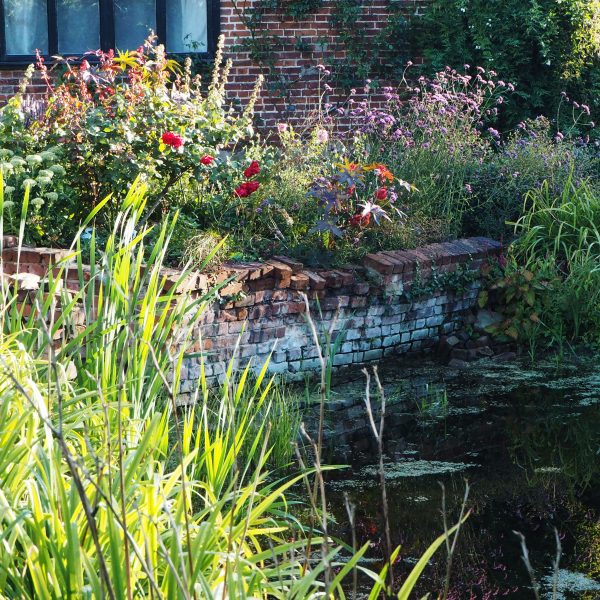
Two years later – the rose is flourishing, with new companions, such as Ricinus and Verbena bonariensis. Not every wall has been restored yet, but a bit of crumbling adds to the atmosphere.
Re-discovering plants from another age in your garden is a bit like having antiques or vintage furniture in your house. They create or add to a sense of history and place.
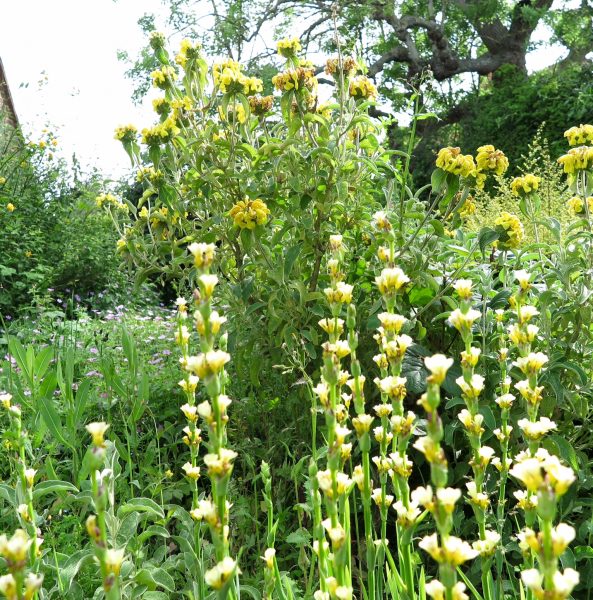
Some self-seeding plants can be encouraged to flourish – it saves replanting beds! Here the yellow pom-poms of phlomis and the creamy stalks of sisyrinchium make a lovely bed for a shady corner.
Renovate a garden – step one
Step one is ‘weed, weed, weed.’ If you take a small section of the garden at a time and clear it by hand, you will get to know your garden intimately.
My friend, Debs, has restored a magical rented country garden almost entirely by weeding.
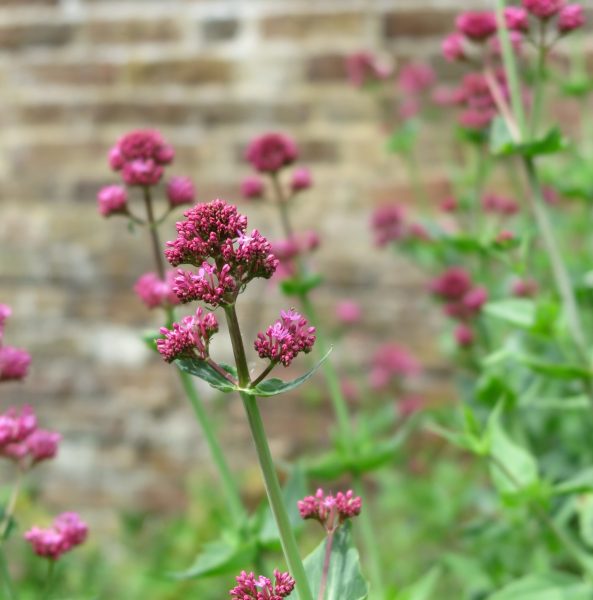
Red valerian – very pretty but here it’s a weed. It covered the garden walls and its roots ate away at the cement. Posy is clearing the valerian away from the garden.
Posy advises weeding after it’s rained, because weeds will be easier to pull out. You will need a stout small fork, plus a full-size garden fork for stubborn roots such as brambles.
If you want to compost the weeds, make sure they are completely in the dark by covering the compost heap. Otherwise they will grow again in the compost.
There’s a post on how to weed effectively here.
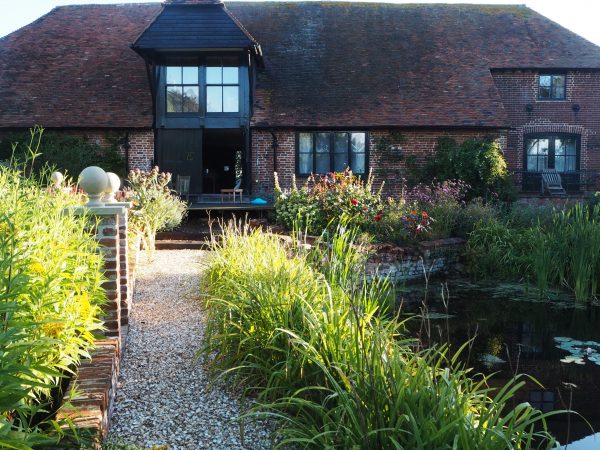
Two years later – as well as weeding, a new path makes a big difference to a garden. This one is covered with a seashell mulch, which is a byproduct of the seafood industry.
Renovate a garden – step two
Pruning is your next task.
Posy advises you to consider every tree and shrub carefully.
Ask yourself: ‘Do I really need to take this plant out?’ Mature trees give a garden texture.
Could pruning give you the space and light you need? (there is more about how to prune mature trees and shrubs to allow light through here).
Renovate a garden – step three
Step three is to feed – where plants or trees need it. I’ve written more about how and when to feed your garden with fertilisers.
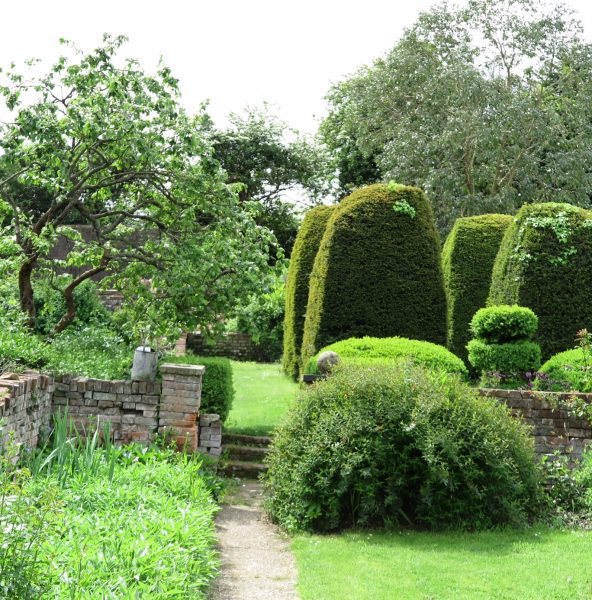
The massive twentieth century yew topiary shapes are gradually being restored – doing it too quickly might kill them.
The stunning yew topiary in this garden is overgrown, but it’s difficult to chop it straight back into shape immediately. Unlike many conifers, yew will re-grow if you cut into the wood, but it won’t look very good until it has re-grown.
You would either have to restore it gradually over several years or cut it right down so that it regrows from the trunk.
Posy and Salvatore are going to bring light into the middle of the yews by levelling them at the top and pulling out the ivy. They are also introducing a little more light by ‘lifting its skirt’ (cutting off some lower branches so that it stands a foot or so off the ground.
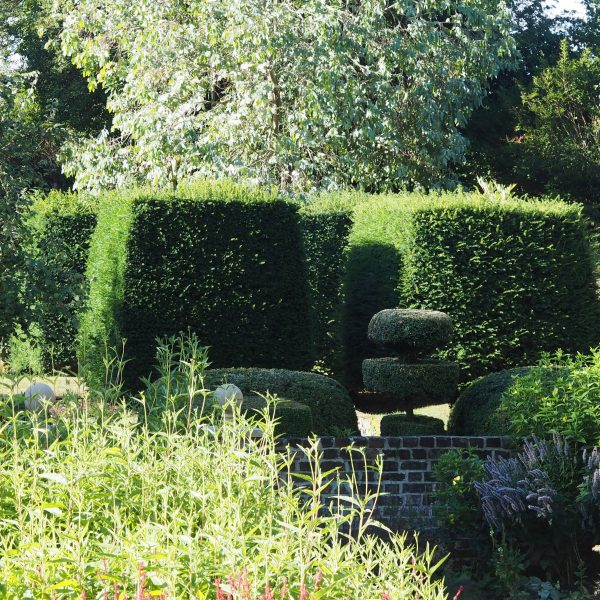
I returned two years after I originally wrote this post. They have successfully restored the topiary and it is now elegantly sharp.
They are feeding the yew with fertiliser, and will cut it back gradually as new growth, stimulated by the light, greens up from inside the plant.
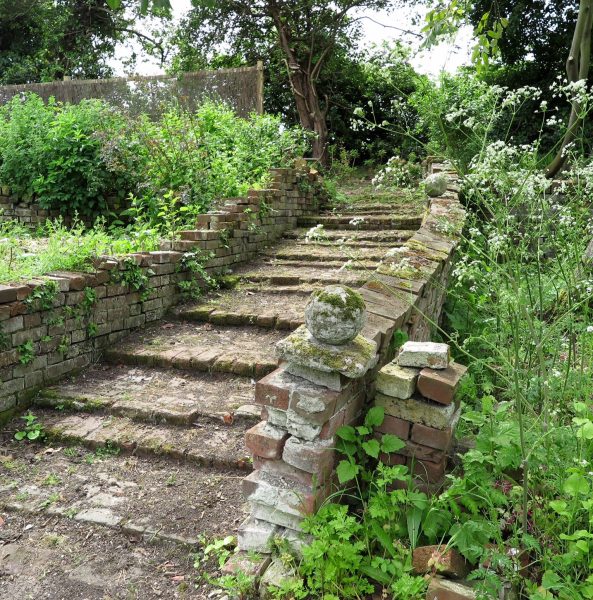
This bed looks very pretty with its self-seeded cow parsley, but it will ultimately be planted up.
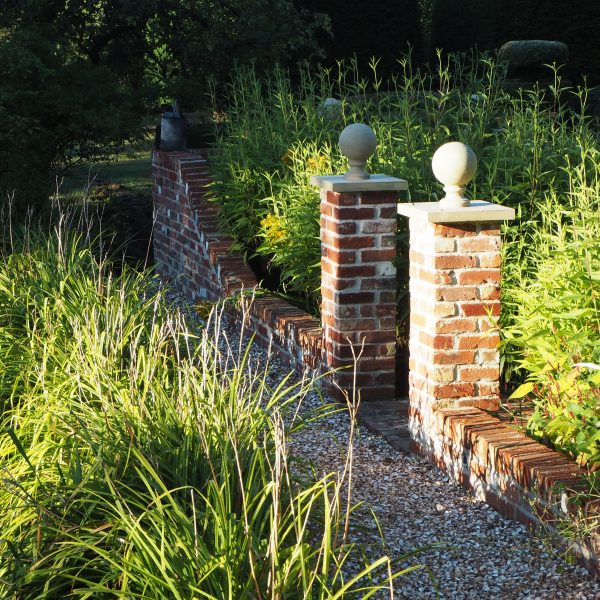
Two years later – much of the crumbling brickwork has been restored – beautifully -. The walls and pillars give the garden definition.
After you weed, prune and fertilise…
And once you’ve done the three essential steps to renovate a garden – weed, prune and fertilise – you can look at the gaps and buy new plants!
You’ll have fewer to buy, and a much smaller bill for re-stocking the garden. And the final effect will be something that could never have been achieved by digging out the lot.
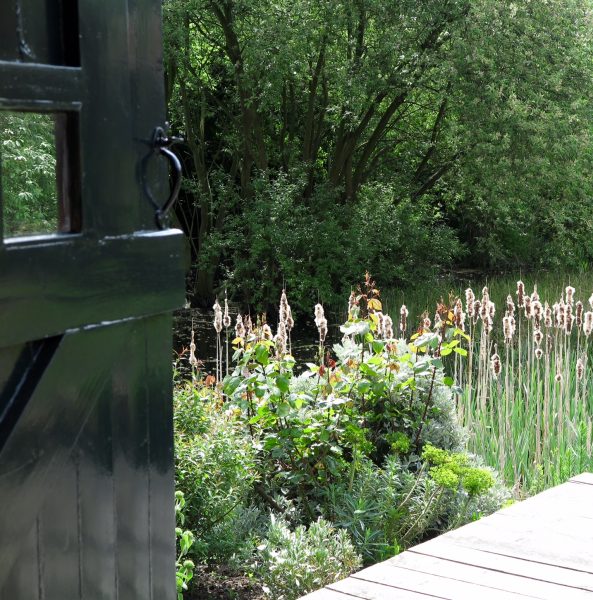
The old farm pond sits in front of the barn – as farm ponds always did. It had not yet been restored in this photo, and is overgrown with bulrushes and trees.
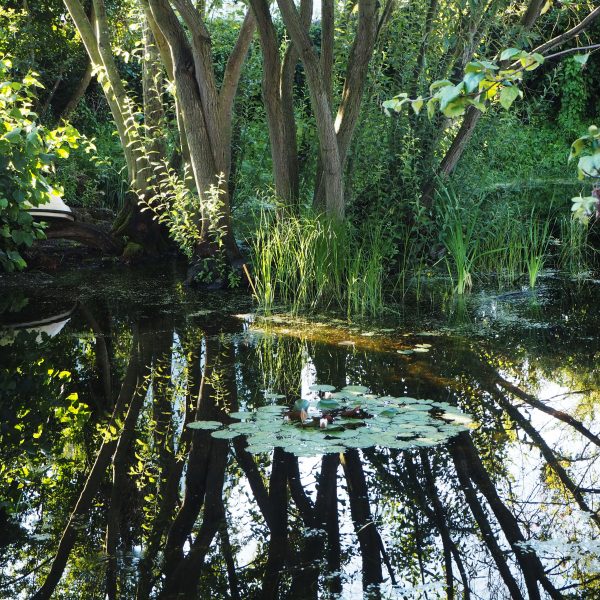
Two years later – the pond is cleared and has water lilies in it. I love the reflection of the trees in the water.
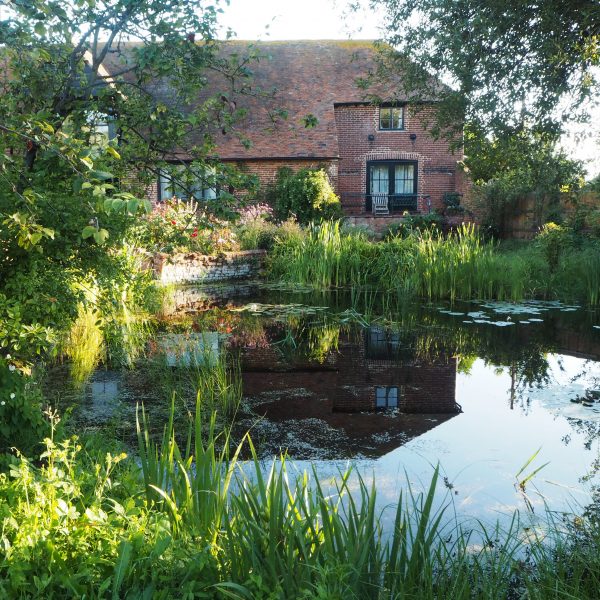
Looking back at the house across the newly restored pond. Now you can see the reflection of the house in the water!
Some friends of ours cleared their garden while they were having their house renovated. They thought it would save time and money.
Now they’ve realised that replacing the whole garden with semi-mature trees is going to cost much more. It will be years before their garden fully achieves the look they want. They wish they’d left some of the mature trees and shrubs in, to give the garden atmosphere.
Natalie and Mike Newman, on the other hand, left many of the mature trees in when they restored their neglected garden.
So if you’re deciding whether to renovate a garden or to scrub it up and start from scratch, do think carefully.
For garden renovation, contact Posy Gentles here.
Pin to remember how to renovate a garden
And do join us. See here for a free weekly email with more gardening tips, ideas and inspiration.


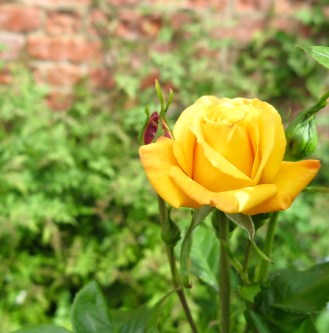

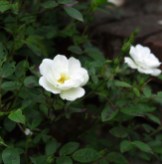
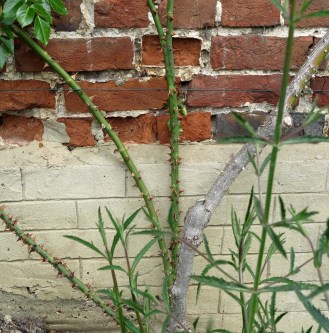
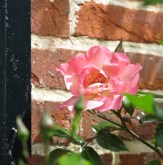
























That flight of steps is so gorgeous I now have step envy…. just lovely.
Sadly, I think they’ve repaired it now – but it is so romantic.
Thanks Alexandra – the one thing that really gets to me is the Houttuynia cordata ‘Chameleon’ – I really wish they hadn’t planted that :(
We all have our least favourite plants, mine is Freimontodendron (probably not even spelt right). It literally brings me up in hives.
Really enjoyed this post – we have taken a similar approach with our garden, slowly editing, clearing aand renovating. A most enjoyable process.
Hope it all goes well. Thirteen years after we moved in here, there are still plants that my predecessor planted – and to my chagrin, they’re often the ones people most admire! But I, too, am glad I didn’t dig everything up.
What a beautiful garden. They’ve done a fabulous job. I’d be tempted to pull everything out, bulldoze everything and then try and put things back. Ultimately, I’d fail and be lest with nothing!
We did do a bit of bull-dozing here, but I’m very glad I held back from taking down mature trees.
The garden looks magical. Would love to visit